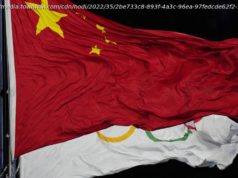Array
In an important article in the current Washington Quarterly, Evan Braden Montgomery and Toshi Yoshihara of the Center for Strategic and Budgetary Assessments (CSBA) explore the foreign policy implications of what they describe as China’s “significant quantitative and qualitative nuclear buildup.” China’s nuclear buildup includes strategic and tactical weapons which the authors believe may have both immediate and long-term effects on regional and global balances of power.
First, the numbers and trends. According to the authors, China has about 350 nuclear warheads, mostly land-based and sea-based intercontinental ballistic missiles (ICBMs). And that number is changing based on reports that China is constructing hundreds of new ICBM silos and is busy modernizing their missiles, each capable of carrying multiple warheads. Both the United States and Russia are believed to have deployed about 1550 nuclear warheads each. The authors note that China’s inventory includes road-mobile ICBMs and submarine-launched ballistic missiles (SLBMs), and it is developing an air-launched ballistic missile capable of delivering nuclear warheads. And its new DF-26 intermediate-range missile is capable of precision strikes. The authors believe that the balance of theater nuclear forces in the western Pacific is shifting in Beijing’s favor. Ominously, Montgomery and Yoshihara report that China is constructing “fast breeder reactors and reprocessing facilities for the production and separation of plutonium, which would enable it to increase its warhead numbers, perhaps substantially.” They note that the Pentagon estimates that China may deploy more than 1,000 nuclear warheads by 2030, and some U.S. officials see these developments as China’s “nuclear breakout strategy” and warn that China may be seeking a “first-strike capability.”
The authors, while convinced that China has “revisionist objectives” based on its actions in the South China Sea and East China Sea, do not find plausible or probable the notion that China is seeking a first-strike capability vis-à-vis the United States.






